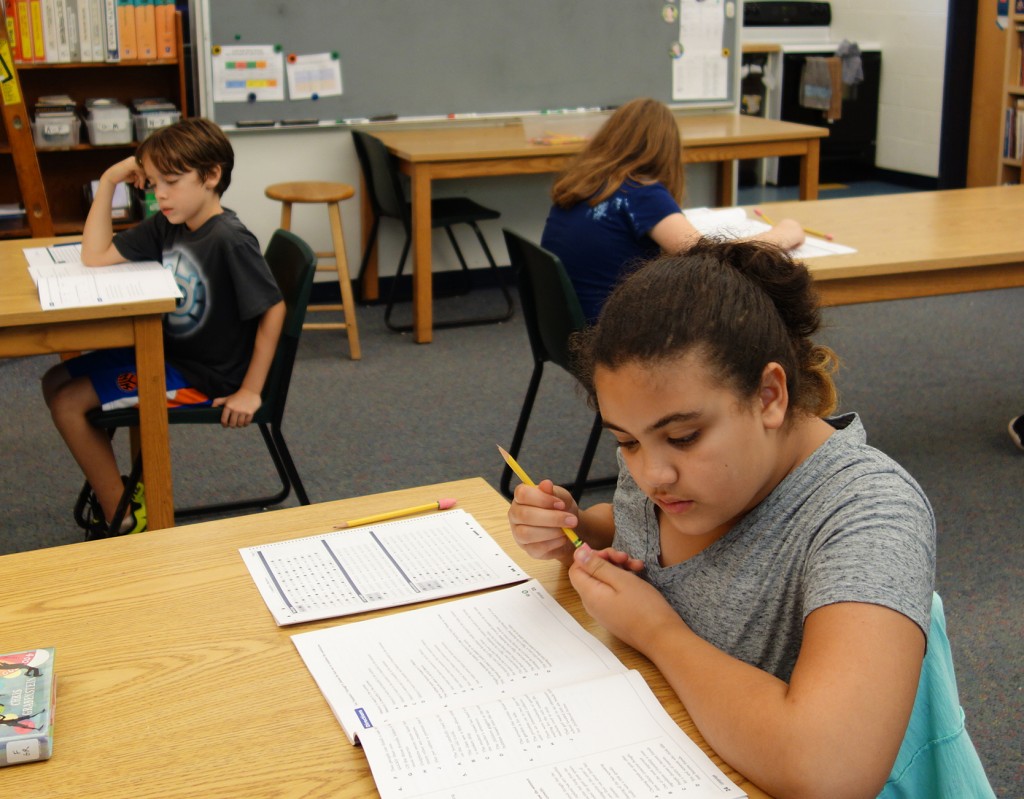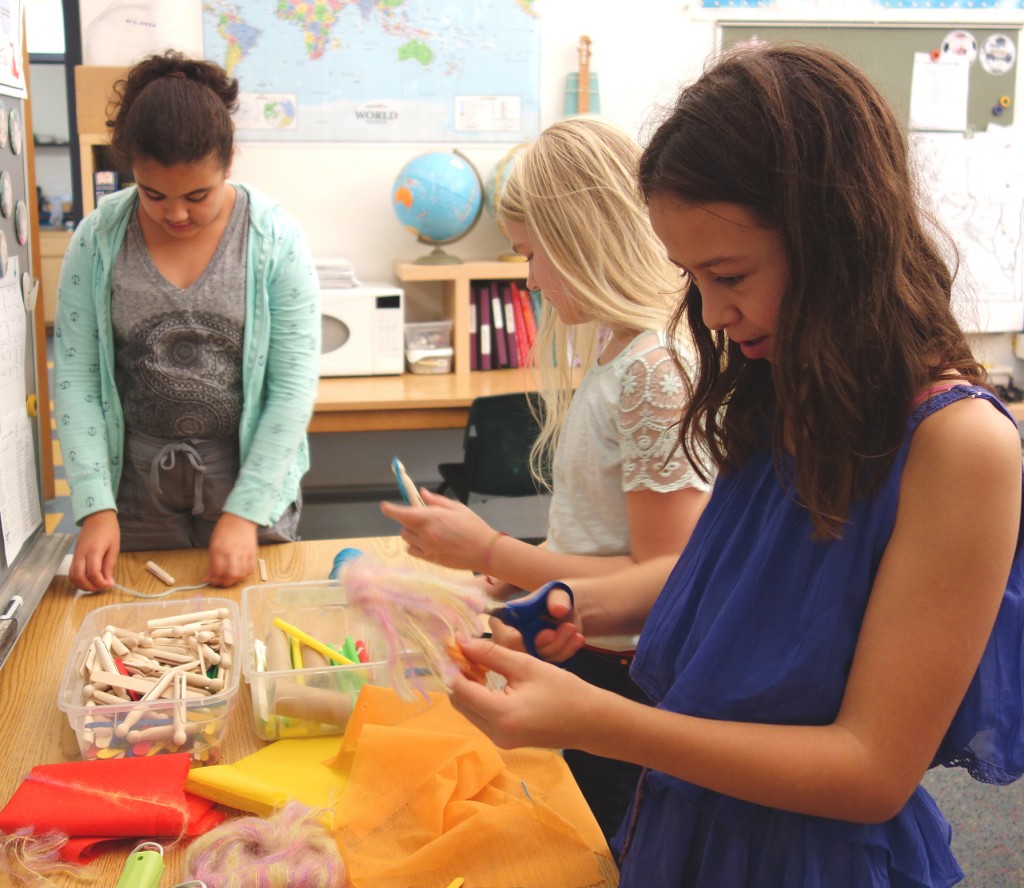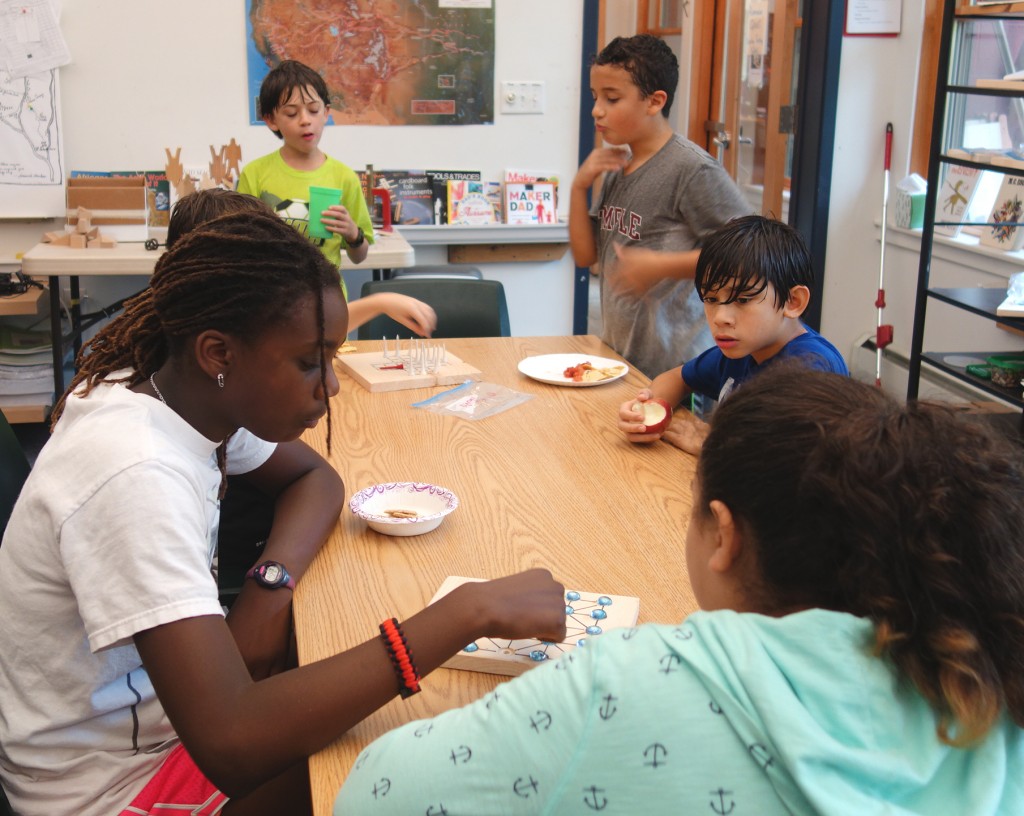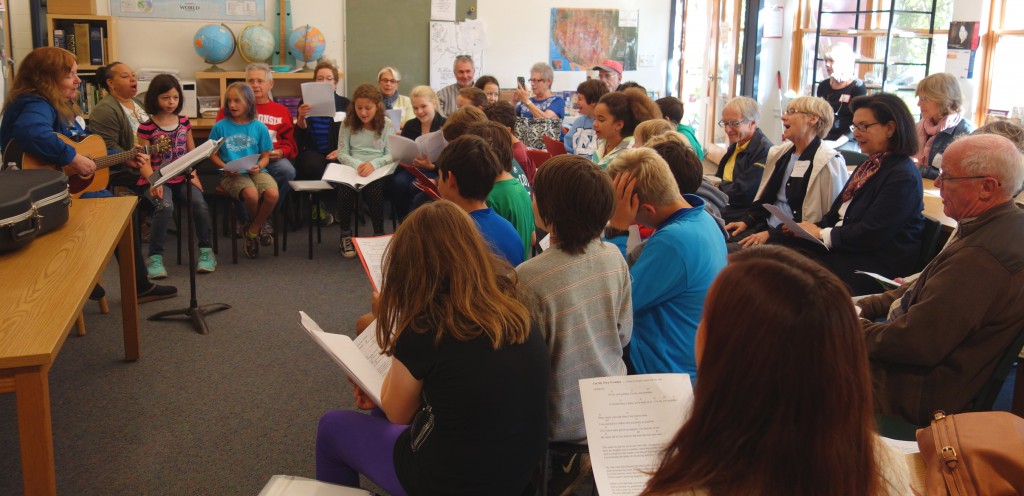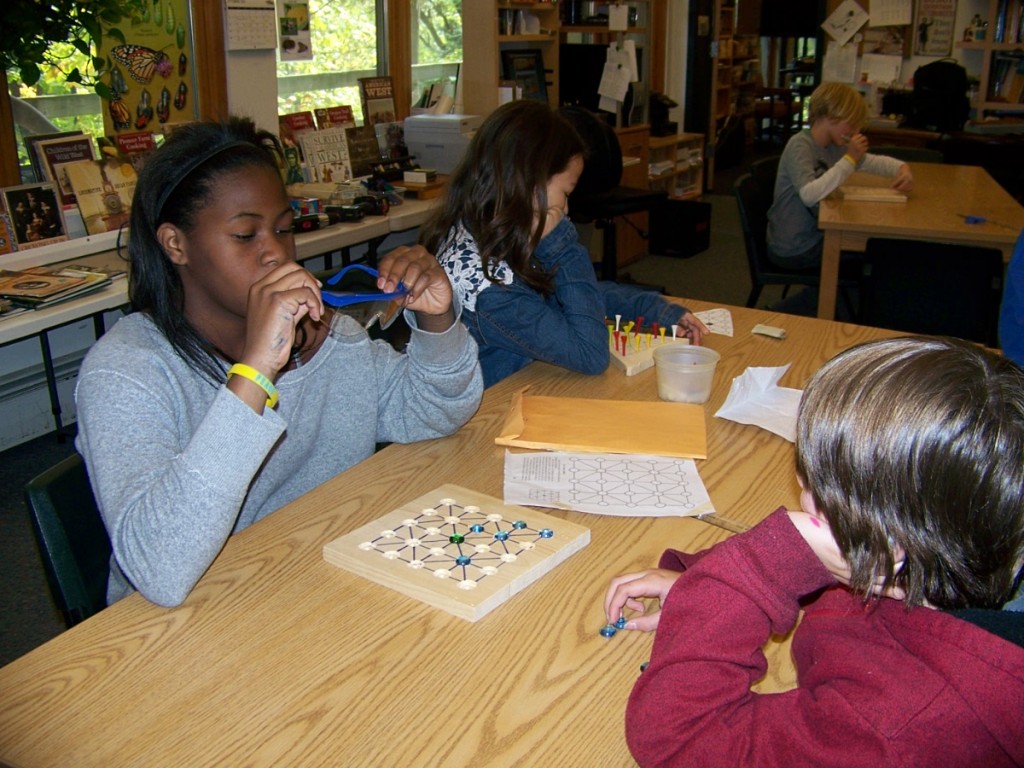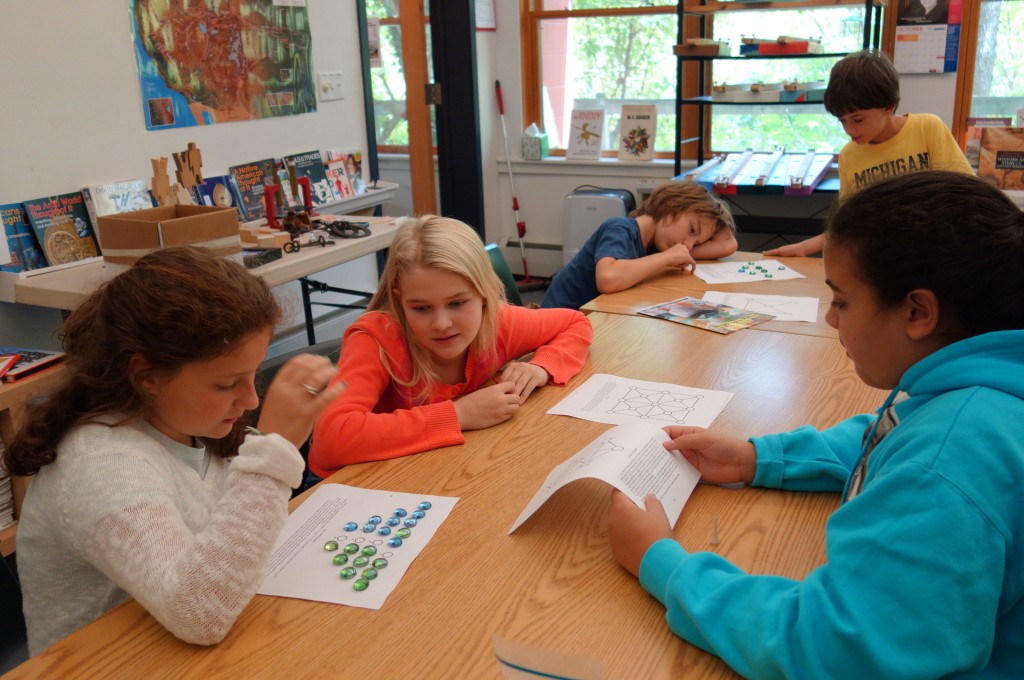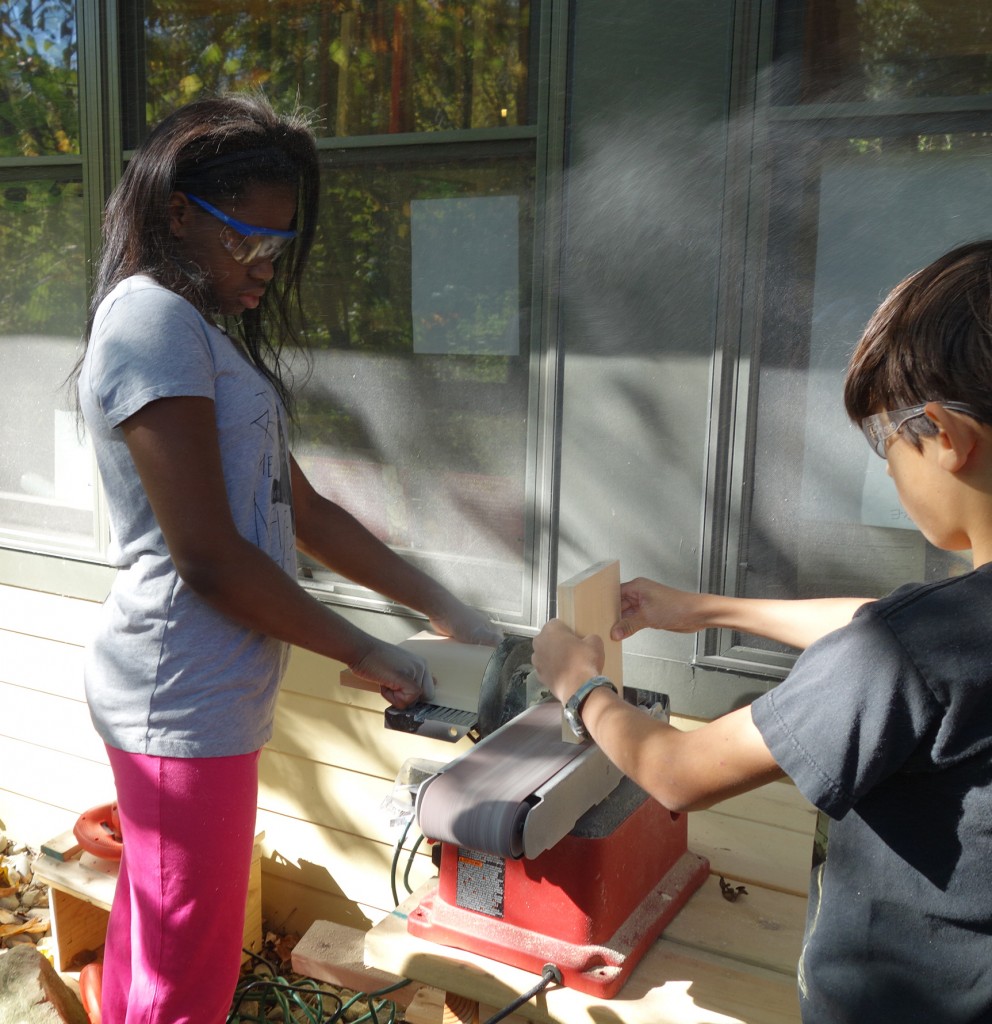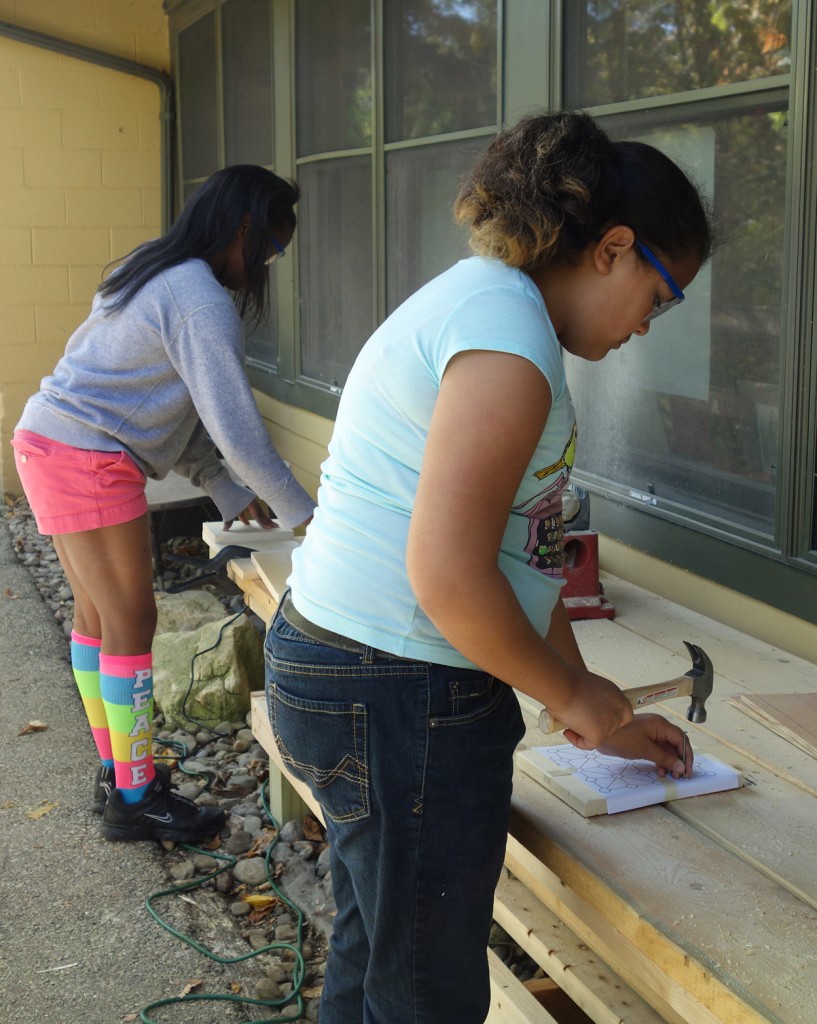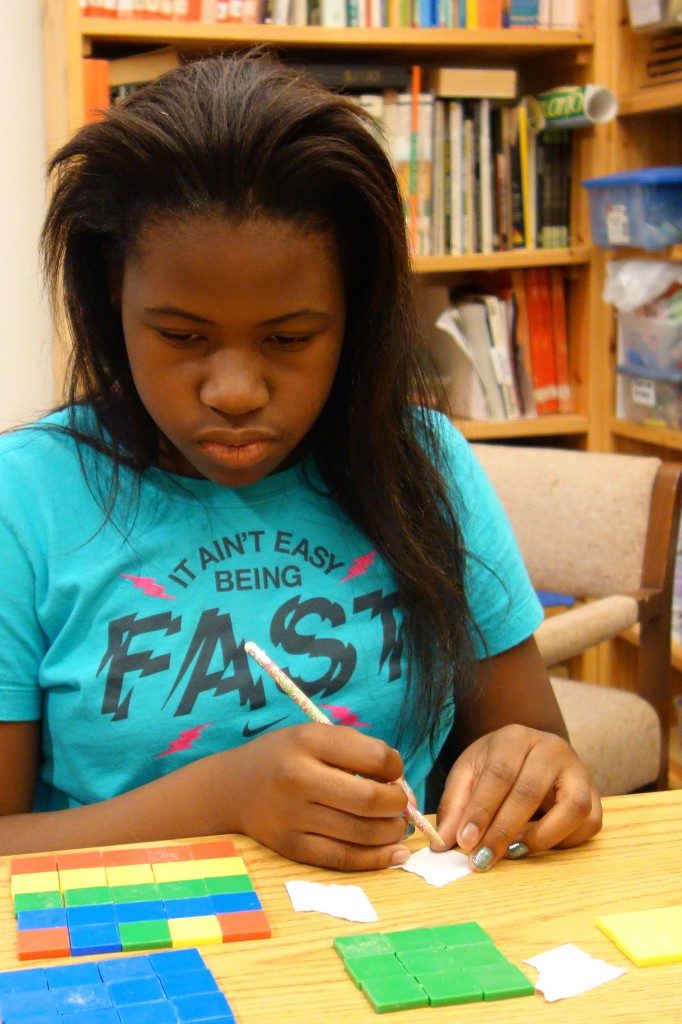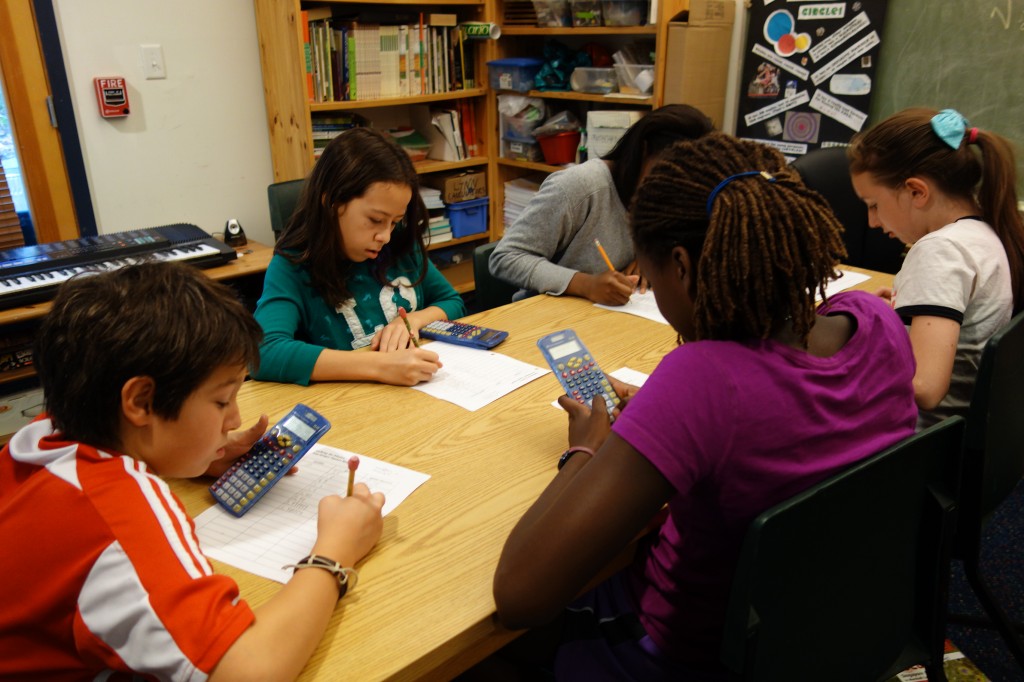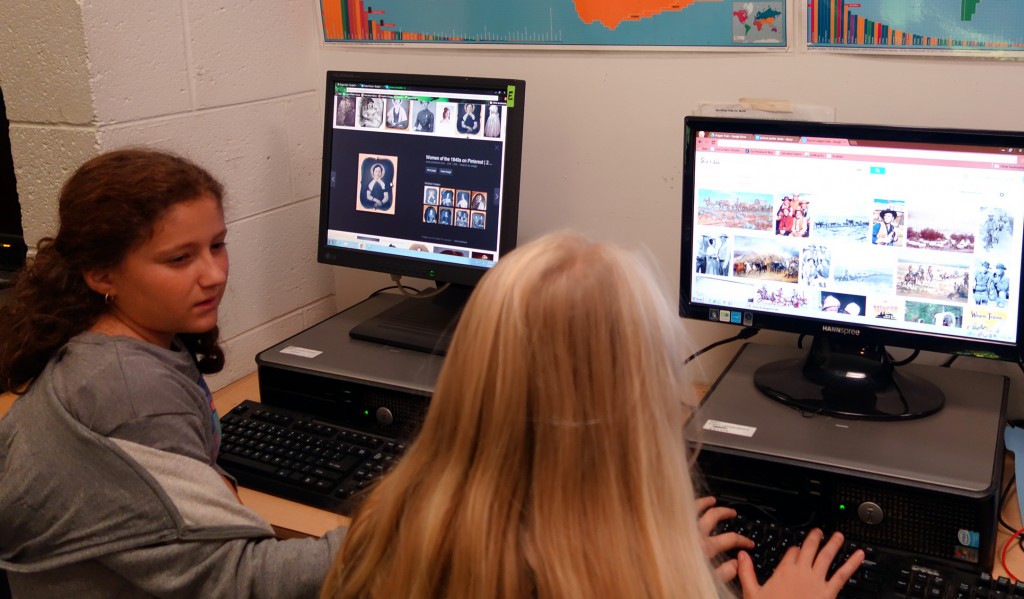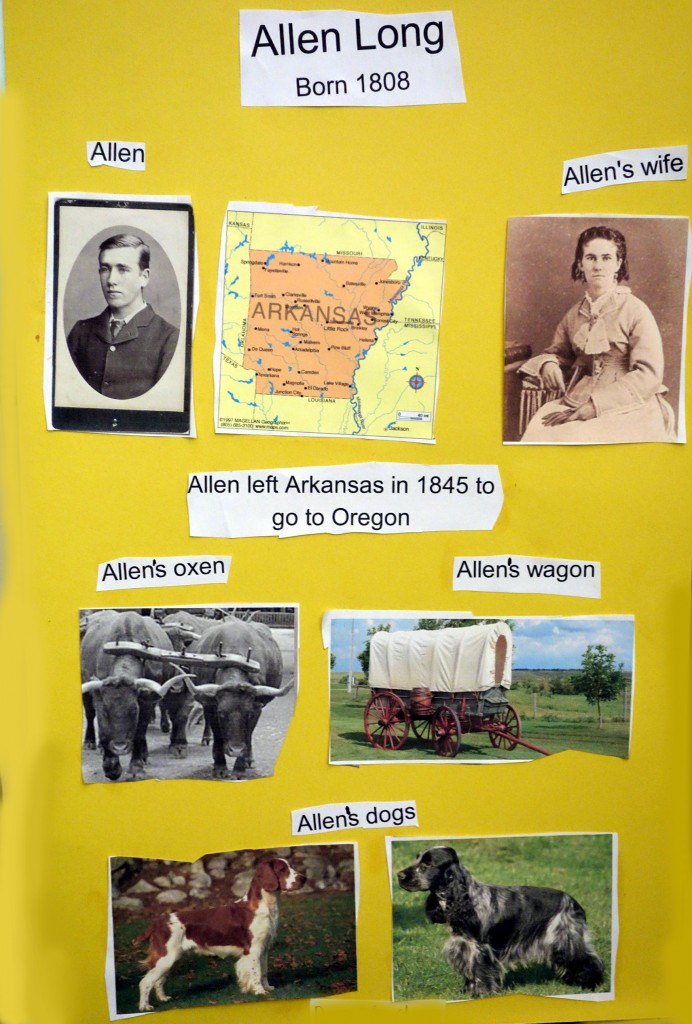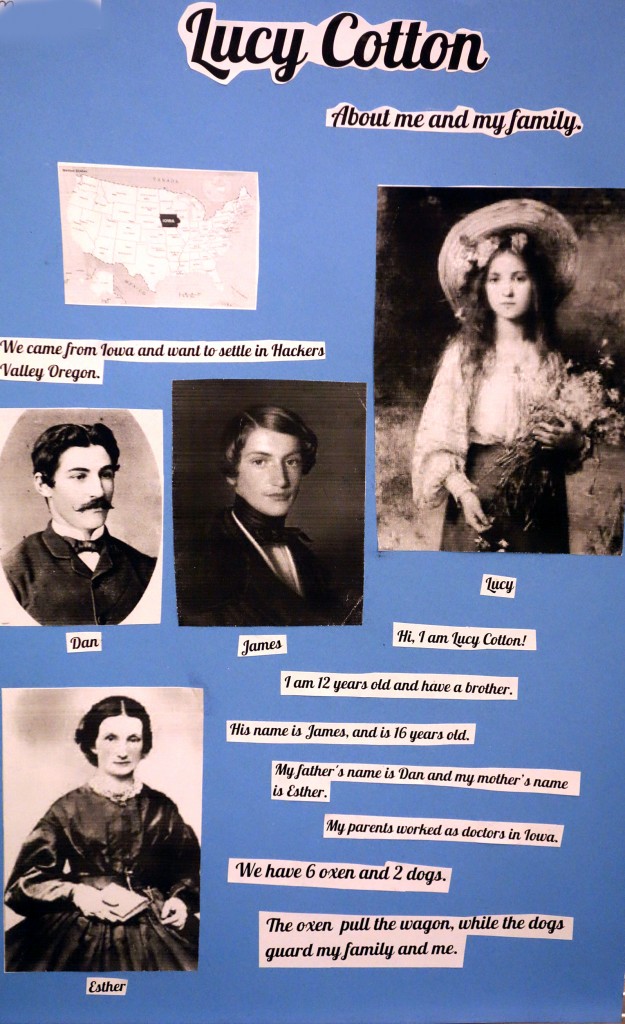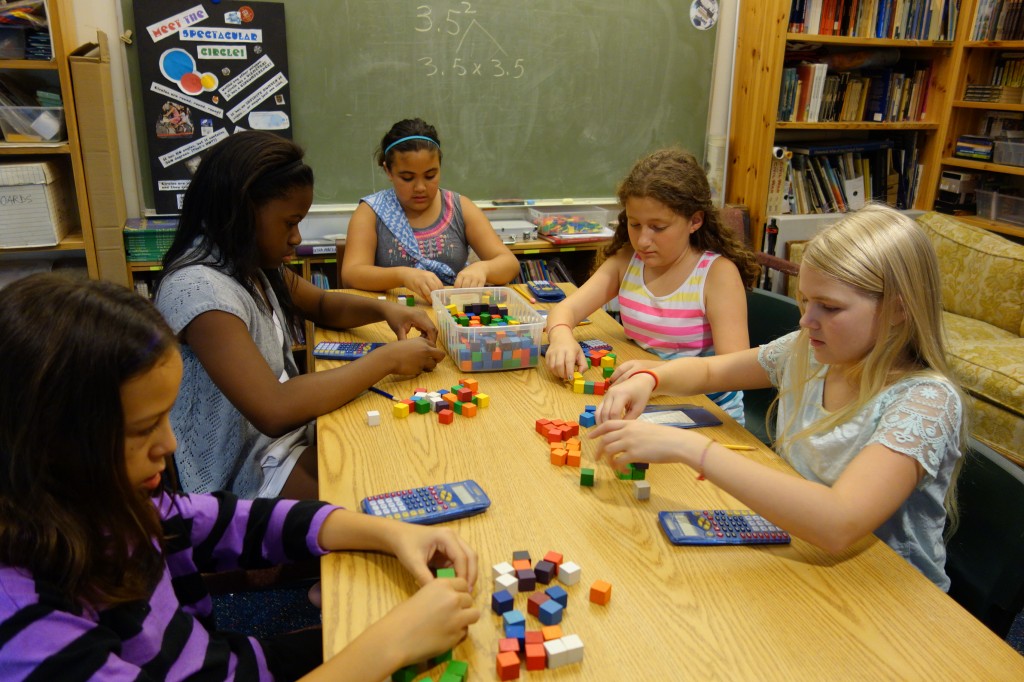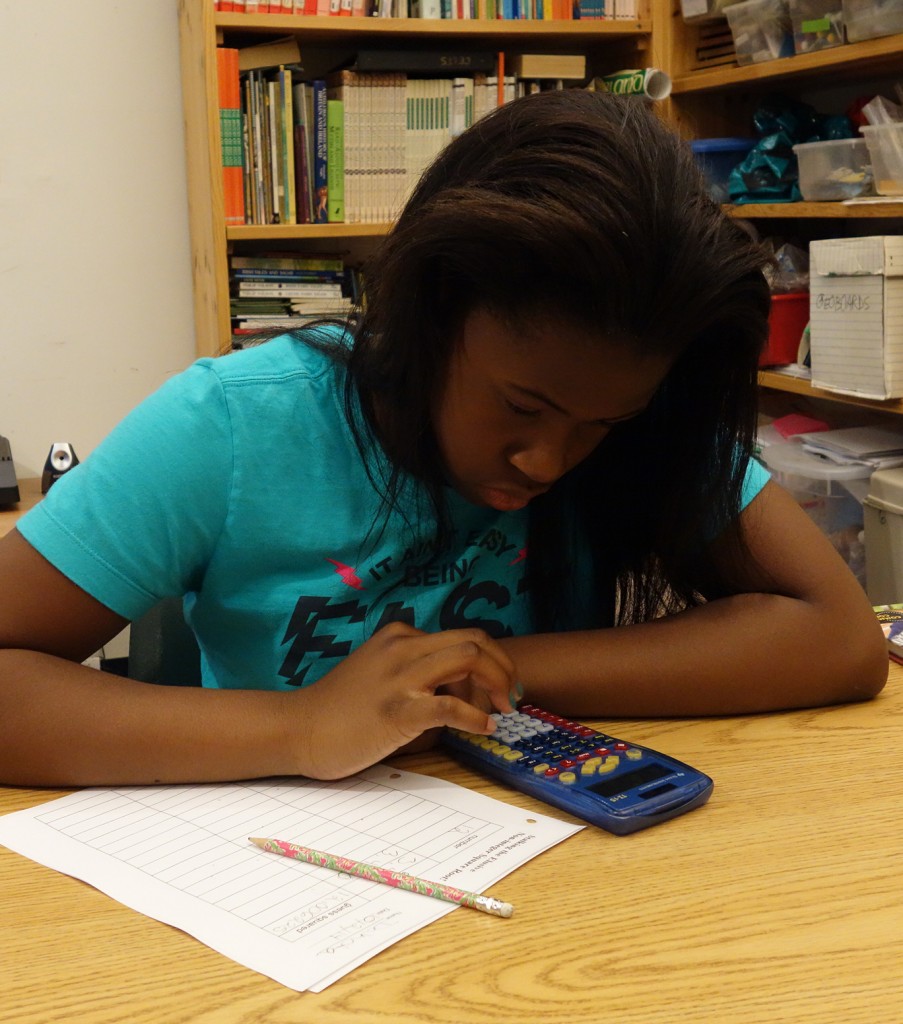Math at the beginning of this week was a bit different because Diane was still out of town for her older daughter’s wedding, so we couldn’t have our usual groups meet on Monday. Instead, we did some activities with everyone that involved learning more about tests for divisibility (that is, determining if a given number is a multiple of a smaller number). Most students were already able to explain how they would decide if a number could be divided by 2, 5, or 10 and leave no remainder.
But what about 3? As it turns out, the divisibility tests for 3 and also for 9 involve finding the digital root of the number in question. You find the digital root by adding all of the digits of the number without regard for place value. For example, we can find the digital root of 12,591 by calculating 1+2+5+9+1. It adds up to 18, which we add again so that we end up with a single digit: 1+8=9. Since the digital root of that original number is a multiple of 3, we know that 3 will go into it without a remainder. That number is also divisible by 9 because the digital root is 9.
Is there a test for 4? Yes. If the last 2 digits of the number are a multiple of 4, the number is a multiple of 4. For example, we can see that 5,616 is divisible by 4 because 16 (the last two digits) is a multiple of 4. Why does that work? It works because all of the higher places are always divisible by 4 because 4 goes into any number of hundreds, thousands, and so on. We only need to check the tens and ones. The test for 8 is similar, but the final 3 digits need to be a multiple of 8 because not all hundreds are divisible but all thousands and upward are. That test usually involves too much computation to be helpful, so we mention it but don’t practice it.
What about 6? Six is built from 2 times 3. So a number is divisible by six if it is even and is also a multiple of three. So first we check the ones digit to see if it’s even. If it is, we then apply the threes test by finding the digital root.
There is a test for 7, but it’s a lot more complicated, so we don’t teach it.
The chart below summarizes what students explored (image source: http://math.tutorvista.com). Everyone needs a lot more opportunity to use the newer rules before it all becomes automatic.

There are several reasons that all of this is useful. First, it’s one way to do a quick check on a division computation. If you are not expecting a remainder but end up with one, there’s a mistake somewhere. It also builds students’ understanding of number relationships. There are no “tricks” involved. Everything has a mathematical reason. For example, the digital root of a number is actually what you would get as a remainder if you divided the number by 9. (The exception to that is any number that is a multiple of 9, because the remainder would be zero, not 9.) Another use of divisibility rules is practical. Suppose we have 212 pencils to give out to 6 classrooms. Will every room get the same number? No, because the digital root of 212 is 5, which is not a multiple of 3. If it’s not a multiple of 3, it can’t be a multiple of 6. How many more pencils would we need in order to make the shares equal? We’d need 4 more, because the next even number that is a multiple of 3 is 216. Do you see any connection between that first digital root of 5 and the number of extra pencils needed (4) to end up with an even multiple of three? (Hint: what is 5 + 4?) As we worked with divisibility, these were the kinds of things that came into the conversation. All of it is part of number theory, and all of it builds number sense.
On Tuesday, Diane and Jeri’s group went on an all-day trip, so we did some work just in our classroom with short division, using our divisibility rules to predict whether there would be a remainder. Short division is a very useful algorithm when you are dividing by a single digit or any number for which you can easily do mental calculations. The image below compares long and short division by showing the same problem worked both ways (image source: http://eisforexplore.blogspot.com/).

The second example involves the following thinking: Six doesn’t go into 2, so I’ll start with 25. It goes 4 times, with 1 left over. Regroup the left-over 1 with the 3 to make 13. Six goes into 13 twice, with 1 left over. Regroup the 1 with the 2 to make 12. Six goes into 12 twice, with nothing left over. All done.
One of the things we like about short division is that it is clearly the reverse of the standard multiplication algorithm. That is, if we multiply 422 by 6 in order to check our division work, we will get the same regrouping (“carrying”) going the opposite way. Six times 2 is 12, so we would write down the 2 and regroup the 1 (ten) to the tens place, and so on. Long division is also a good algorithm to know, but it isn’t the only way to divide and is often more time-consuming than the task actually requires.
We spent some time this week learning a bit more about the world beyond our own neighborhoods. First, we introduced the students to Kiva. This is an organization that arranges micro-loans in many parts of the world, and we contribute part of our lunch sale profits to them. Students looked at the information on several people who had applied for loans and, as a group, decided on whom to support. We read some biographical information that increased students’ understanding of how some people were living in distant places such as El Salvador, Senegal, and Colombia. (One woman had never been to school because she was the oldest child in a large family, and her mother kept her home to help with the housework and care for her siblings. She wanted a loan to buy supplies for her small food-selling business. She uses the profits from it to help pay for her own children’s education.) Because the money is a loan and not a donation, it gets repaid, so we can lend it out again. In fact, what we loaned this week was what had been repaid on loans made by last year’s group. Next week, we’ll chose a new recipient of a $25 loan from the lunch sale we just completed. To learn more about this organization, visit www.kiva.org and see how it all works.
The second activity was focused closer to home. Students read and summarized the article in their current issue of Junior Scholastic magazine about the fatal shooting of Michael Brown in Ferguson, Missouri. We then discussed it in half-groups the next day. The discussions involved not only the events in Ferguson but also brought out students’ questions and observations about such things as racism, fairness, stereotypes, courts and juries, and differences in the neighborhoods in which they each live. One of our goals was to help students recognize that not everyone has the same experiences or the same concerns. It’s not easy to step outside of your own assumptions to see things from another perspective. One student commented, “I think that everyday people probably don’t understand how much racism there is.” We asked her whom she had in mind when she said everyday people. She stopped and thought for a minute or two and then said, with some surprise in her voice, “Me!” That gave us a good opportunity to talk about our biases and unconscious behaviors. For example, if a character in a story is not described physically and there is no other guiding information, what do you assume that person looks like? White, black, Asian, or something else? We didn’t all have the same answer. We hope that you’ll continue such conversations at home.
As always, we did many more things than this, but it seems more informative to give you a closer view of part of our week than a quick sketch of all of it.

